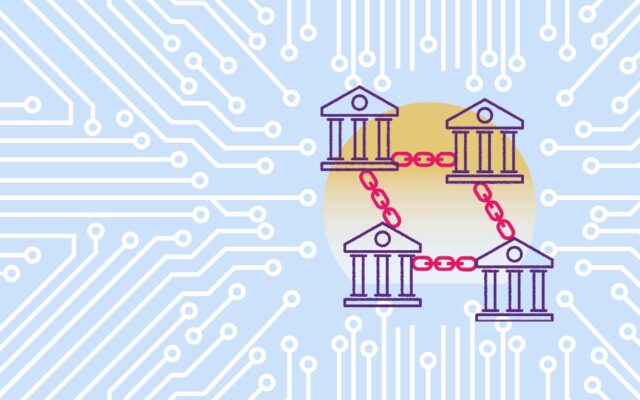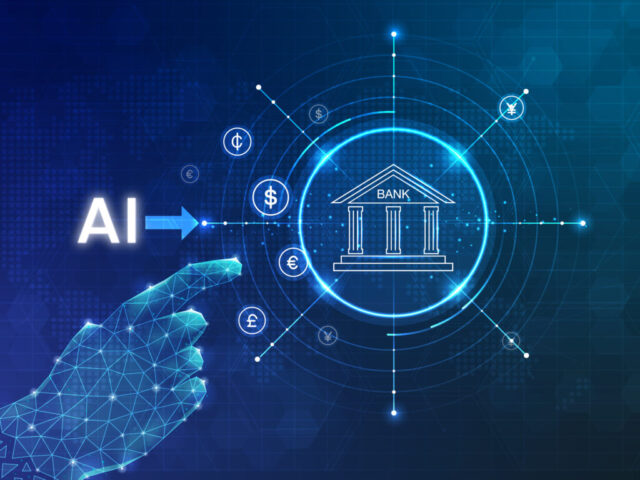
The finance and banking sectors are transforming rapidly, thanks to a range of powerful new technologies. These innovations are streamlining operations, enhancing security, and redefining how financial services are delivered.
Here’s a look at the top nine tech trends that are making waves in the industry, and what they mean for the future of finance.
1. Blockchain Technology for Secure Transactions and Transparency

One of the most significant tech trends in finance is blockchain technology, which has emerged as a secure way to handle transactions. Blockchain’s unique structure—an immutable ledger shared across a decentralized network—offers an ideal solution for financial services where security and transparency are paramount. With blockchain, each transaction is securely encrypted and verified across multiple nodes, reducing the chances of fraud. This technology is already making strides in areas such as cross-border payments, smart contracts, and asset management, and it’s continuing to expand into other financial services as well.
For banks and financial institutions, blockchain can reduce operational costs by automating processes and cutting out intermediaries. The transparent nature of blockchain also allows clients to verify transactions in real-time, boosting trust and enhancing customer relationships.
2. Bank Training Software to Boost Employee Skills
Technology isn’t just transforming how financial transactions are handled—it’s also reshaping employee training. Financial institutions are increasingly turning to bank training software to develop their workforce efficiently and consistently. This software provides employees with relevant, up-to-date information on regulations, customer service, and technical skills. By using interactive and modular content, employees can learn at their own pace, making the process more effective and tailored to individual needs.
Bank training software also allows institutions to track progress and ensure that employees are meeting necessary compliance standards. Given the constant changes in finance regulations, having a training system that’s easy to update is crucial. By integrating training software, banks can maintain high standards of service and compliance without interrupting day-to-day operations.
3. Artificial Intelligence (AI) for Improved Customer Service and Efficiency

Artificial intelligence (AI) is another powerful tool that’s transforming the finance sector, particularly in the areas of customer service and operational efficiency. AI-powered chatbots and digital virtual assistants are helping banks deliver instant, 24/7 customer support. These systems can handle routine inquiries, allowing human representatives to deal with much more complex issues, and so that they can also provide personalized recommendations to customers.
Beyond customer service, AI is being used to automate back-office tasks, analyze large data sets, and detect fraud. Machine learning algorithms can easily identify unusual patterns that might indicate fraudulent transactions, adding an additional layer of security. As AI continues to advance, it’s likely that its role in finance will expand, making processes faster and more accurate, and enhancing customer experiences across the board.
4. Robotic Process Automation (RPA) to Streamline Operations
In finance, many back-office tasks are repetitive and time-consuming, such as data entry, compliance checks, and reporting. Robotic Process Automation (RPA) is stepping in to handle these tasks, freeing up employees for higher-value work. RPA software uses robots, or “bots,” to carry out routine tasks quickly and accurately. These bots follow a programmed set of rules, meaning they can work without errors and with remarkable speed.
RPA has proven particularly beneficial in regulatory compliance, where it can ensure that all documentation and reporting meet strict standards. By reducing the workload for human employees, RPA also reduces the risk of human error.
5. Biometric Security for Enhanced Data Protection

In an industry where data security is a top priority, biometric technology is increasingly being used to verify identities and secure transactions. From fingerprint recognition to facial and voice scans, biometric security provides a higher level of authentication than traditional passwords or PINs. For financial institutions, this means fewer fraud cases and a stronger line of defense against unauthorized access.
Biometric technology can also improve the customer experience by simplifying the login process. Rather than remembering multiple passwords, customers can access their accounts quickly and securely. Biometric systems are becoming more sophisticated, offering options like behavioral biometrics, which analyze the way users interact with their devices.
6. Open Banking for Greater Financial Transparency
Open banking is changing how financial institutions share and access data. Through open banking frameworks, customers can give permission to third-party providers to access their financial information, allowing for more personalized and comprehensive financial services. This can include budgeting tools, investment advice, and more, based on the customer’s full financial picture.
For financial institutions, open banking offers opportunities to collaborate with fintech companies and offer a broader range of services. This transparency allows customers to manage their finances across multiple accounts and providers seamlessly, giving them more control over their financial lives.
7. Cloud Computing for Scalable Data Management

With the rise of big data, financial institutions need a secure, scalable solution for managing and analyzing vast amounts of information. Cloud computing provides just that, allowing banks to store their data and run different applications on remote servers instead of on-premises hardware. This flexibility not only saves on costs but also provides enhanced data security and accessibility.
Cloud computing allows financial institutions to adapt quickly to changing demands. For example, during peak times, cloud resources can be scaled up to handle increased activity. Plus, cloud-based systems enable remote work, allowing employees to work from anywhere. As cloud technology continues to evolve, it’s becoming an indispensable tool for modern finance, offering both scalability and reliability.
8. Predictive Analytics for Informed Decision-Making
By analyzing historical data, predictive models can forecast future outcomes, helping banks make informed decisions about everything from credit assessments to investment strategies. This technology allows institutions to anticipate customer needs, providing targeted services and products that align with their preferences.
For example, predictive analytics can help companies find which customers are likely to benefit from specific financial products, allowing for more personalized marketing. It also aids in risk management, giving banks a clearer picture of potential risks based on data patterns.
9. Cybersecurity Enhancements to Combat Evolving Threats

As financial institutions adopt more digital tools, cybersecurity becomes increasingly critical. Cyber attacks on financial data can have severe repercussions, making it essential for banks to stay ahead of threats with cutting-edge cybersecurity measures. This includes multi-layered security protocols, encryption technologies, and real-time monitoring systems designed to detect suspicious activities instantly.
The finance sector has also started using AI and machine learning in cybersecurity, which can identify and respond to threats before they escalate. Enhanced cybersecurity measures help protect both the institution and its customers, building trust and confidence.







